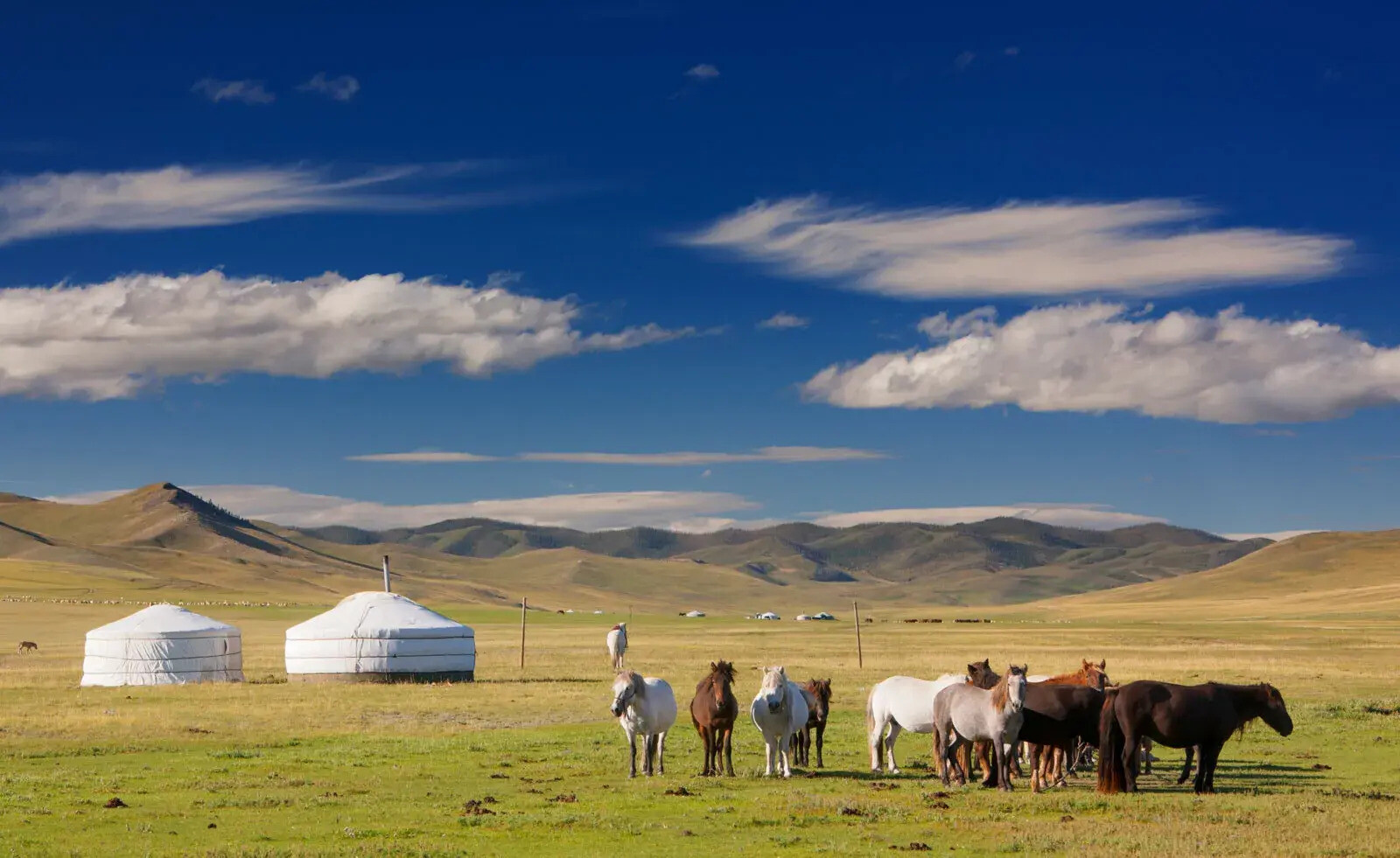
Mongolia, a land of vast steppes, nomadic traditions, and rich history, often remains a mystery to many. Did you know Mongolia is the world's most sparsely populated country? With its stunning landscapes and unique culture, Mongolia offers a treasure trove of fascinating facts. From the legendary Genghis Khan to the incredible Naadam Festival, this country has much to offer. Mongolia's capital, Ulaanbaatar, is home to nearly half of the nation's population. The traditional ger, or yurt, symbolizes the nomadic lifestyle still prevalent today. Ever heard of the "Eternal Blue Sky"? Mongolia boasts over 250 sunny days a year! Ready to learn more? Let's dive into 25 intriguing facts about this captivating country.
Key Takeaways:
- Mongolia, the 18th largest country, boasts diverse landscapes, extreme temperatures, and rich nomadic traditions. From the Gobi Desert to the Blue Pearl Lake, its geography shapes its unique culture and lifestyle.
- With a rich history rooted in Genghis Khan's empire, Mongolia celebrates Naadam festival and preserves its wildlife, including snow leopards and Bactrian camels. Its economy thrives on mineral resources and nomadic herding.
Geography and Landscape
Mongolia is a land of vast steppes, rugged mountains, and arid deserts. Its unique geography shapes the lifestyle and culture of its people.
- Mongolia is the 18th largest country in the world, covering approximately 1.56 million square kilometers.
- The Gobi Desert, one of the largest deserts in the world, spans southern Mongolia and northern China.
- Mongolia has three major mountain ranges: the Altai, Khangai, and Khentii mountains.
- Lake Khövsgöl, known as the "Blue Pearl of Mongolia," is one of the oldest and deepest lakes in the world.
- The country experiences extreme temperatures, ranging from -40°C in winter to 40°C in summer.
History and Culture
Mongolia's rich history and vibrant culture are deeply rooted in its nomadic traditions and legendary figures.
- Genghis Khan, born in 1162, founded the Mongol Empire, which became the largest contiguous empire in history.
- The Mongol Empire at its peak stretched from Eastern Europe to the Sea of Japan.
- Mongolia celebrates Naadam, a traditional festival featuring wrestling, horse racing, and archery, every July.
- The traditional Mongolian dwelling, the ger (or yurt), is designed to be portable and withstand harsh weather.
- Throat singing, or "khöömei," is a unique Mongolian musical tradition where singers produce multiple pitches simultaneously.
Wildlife and Nature
Mongolia's diverse ecosystems are home to a variety of unique wildlife species and natural wonders.
- The Przewalski's horse, the last truly wild horse species, was reintroduced to Mongolia after being extinct in the wild.
- Snow leopards, one of the world's most elusive big cats, inhabit the mountainous regions of Mongolia.
- The country is home to the world's largest population of Bactrian camels, which have two humps.
- Mongolia has over 250 bird species, including the rare and endangered Siberian crane.
- The Flaming Cliffs in the Gobi Desert are famous for the discovery of dinosaur fossils, including the first dinosaur eggs.
Economy and Lifestyle
Mongolia's economy and lifestyle are influenced by its natural resources and nomadic heritage.
- Mongolia is rich in mineral resources, including coal, copper, gold, and uranium.
- The country has one of the world's lowest population densities, with about 3.3 million people.
- Nomadic herding remains a significant part of the Mongolian lifestyle, with many families moving seasonally with their livestock.
- Ulaanbaatar, the capital city, is home to nearly half of Mongolia's population.
- The traditional diet includes meat, dairy products, and a variety of fermented beverages like airag (fermented mare's milk).
Religion and Beliefs
Mongolia's spiritual landscape is shaped by a blend of ancient shamanistic practices and Buddhism.
- Tibetan Buddhism is the dominant religion in Mongolia, introduced in the 16th century.
- The Gandan Monastery in Ulaanbaatar is one of the most important Buddhist centers in the country.
- Shamanism, an ancient spiritual practice, is still practiced by some Mongolian communities.
- Ovoos, sacred stone heaps, are found throughout Mongolia and are used in shamanistic rituals.
- The Dalai Lama has visited Mongolia several times, reflecting the strong ties between Mongolian and Tibetan Buddhism.
Mongolia's Unique Wonders
Mongolia's rich history and vibrant culture make it a fascinating place. From the vast Gobi Desert to the bustling capital of Ulaanbaatar, there's so much to learn and appreciate. The Naadam Festival showcases traditional sports, while the Eagle Hunters of the Altai Mountains highlight ancient traditions. Mongolia's nomadic lifestyle and yurt living offer a glimpse into a simpler way of life. With its endless steppes, wild horses, and pristine lakes, Mongolia remains a land of natural beauty and cultural depth. Whether you're intrigued by its past or captivated by its present, Mongolia offers a unique blend of the old and new. Dive into its wonders, and you'll find a country that's as diverse as it is enchanting.
Frequently Asked Questions
Was this page helpful?
Our commitment to delivering trustworthy and engaging content is at the heart of what we do. Each fact on our site is contributed by real users like you, bringing a wealth of diverse insights and information. To ensure the highest standards of accuracy and reliability, our dedicated editors meticulously review each submission. This process guarantees that the facts we share are not only fascinating but also credible. Trust in our commitment to quality and authenticity as you explore and learn with us.


